Names and Nomenclature
When tracking down published scientific names, and their places of publication, IPNI, The Plant List and Tropicos are the three primary websites. The other listed sites are useful for interpreting abbreviations and following up on nomenclatural matters.
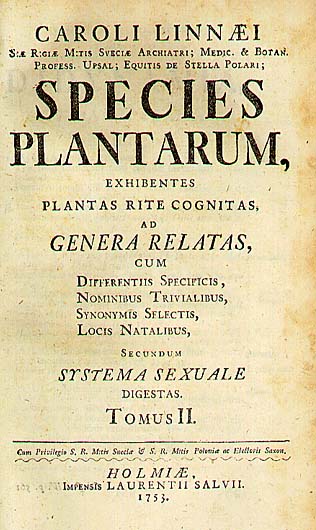 International Plant Names Index (IPNI), includes Index Kewensis, the Gray Card Index (Harvard University), and the Australian Plant Names Index. A increasingly useful and authoratiative resource, but be aware that author citations and publication data may not be in standard form or complete, there are very few pre-1970 infraspecific names included, any basionym links/accepted names are just to be used as a guide, there are still some OCR scanning errors from the original digitisation.
International Plant Names Index (IPNI), includes Index Kewensis, the Gray Card Index (Harvard University), and the Australian Plant Names Index. A increasingly useful and authoratiative resource, but be aware that author citations and publication data may not be in standard form or complete, there are very few pre-1970 infraspecific names included, any basionym links/accepted names are just to be used as a guide, there are still some OCR scanning errors from the original digitisation.
The Plant List a working list of all known plant species – Version 1.1. Useful to use in conjunction with IPNI as it includes mosses and liverworts, but there are many errors an omissions due to inaccuate algorithums used to bring datasets (primarily those at Kew and Missiouri) together.
W3 TROPICOS has a great deal of nomenclature and specimen information. Very useful links to protologues in Biodiversity Heritage Libarary.
Index Nominum Genericorum gives nomenclatural data for generic names.
Index Fungorum gives nomenclatural data for the names of fungi.
International Code of Nomenclature for Algae, Fungi and Plants (Melbourne Code). Previous International Codes of Botanical Nomenclature, Vienna Code in English, Tokyo & St Louis Codes in several languages.
Kew Author Abbreviations, are included within the IPNI site (see also the Harvard University Herbarium version).
Linnaean Plant Name Typification Project includes links on the homepage to historic online herbaria at the NHM.
Literature
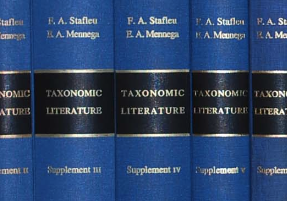 Botanico-Periodicum-Huntianum (BPH & BPH/S) for standard journal abbreviations (Harvard University Herbarium version).
Botanico-Periodicum-Huntianum (BPH & BPH/S) for standard journal abbreviations (Harvard University Herbarium version).
Taxonomic Literature 2 (TL2) now hosted on the Smithsonian website provides standard abbreviations for taxonomic books (scanned pages of the original volumes), see also the Harvard University Herbarium version and the publication data in IPNI.
Biodiversity Heritage Library – the majority of taxonomic books and periodicals currently online can be accessed here
Internet Archive – a huge resource of eBooks (including Google Books), but often not easy to find things in the searches for multi volume works.
Gallica – the Bibliothèque National de France, with many old books in the French language (e.g. De Candolle publications).
Cyberliber is a extensive litrature resource for the mycological world
Herbarium Specimens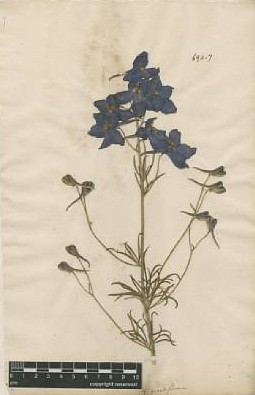
Index Herbariorum for addresses, major collectors, herbarium acronyms, etc.
Many Herbaria have put at least some of their collections online, either just text label data or with images of the specimens – but you will need to go the institute website to find out (e.g. RBGE). Those involved in the Global Plants Intitiative (mainly concerned with Type specimens) have contributed specimen details to JSTOR Global Plants – which is an excellent place to start when searching for Type specimens.
A growing number of historic herbaria are now online – e.g. Linnaeus and De Candolle
Global Biodiversity Information Facility, GBIF, is a portal to institutes with online collections linked to GBIF, and good starting point.
Other portal sites include Fairchild Virtual Herbarium Web Portal and the Worldwide List of Internet Accessibe Hebaria, but the latter is rather out of date now.
National Biodiversity Network, NBN, facility to for UK biological records, mapping, etc.
…to work out who collected them and where:
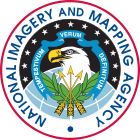 Harvard University Herbaria Collectors Index.
Harvard University Herbaria Collectors Index.
Worldwide Directory of Cities and Towns and US National Geospatial Intelligence Agency (formerly NIMA) Public Geographic Names Server,
NGA GEOnet Names Server is another resource for putting a place to a name,
MapQuest, for checking positions, deciding what political boundary it is in,
BioGeomancer, a facility to help geo-locate old biological collections,
East Himalayan Gazetteer of Plant Collecting Localities
Flora of Nepal Botanical Locator
…and to plot them on a map:
Google Earth, a download programe that is just brilliant for a variety of geo mapping tasks,
GPS Babel, a download utility for converting GPS data between formats (including Google Earth),
DIVA-GIS a free mapping programme good for distribution maps, routes, etc.
Living Collections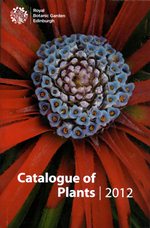
As for online herbaria, there are several Botanic Gardens with online catalogues, e.g. RBGE Living Collections.
Those usings BG-BASE and HTMLEXPORT are linked through the RBGE Multisite Search.
General Information
Any major searchengine, e.g. Google, Altavista, Yahoo.
Internet Directory for Botany, an alphabetic list of sites with a search facility.
Wikipedia, often has informative pages on families, genera and species,
RBGKew Electronic Plant Information Centre, (EPIC).
Flowering Plant Gateway, includes synopses of major classifications, e.g. Cronquist, Takhtajan, Thorne, APG.
Angiosperm Phylogeny Website (APG).
IOPI Global Plant Checklist, provisional.
There are lots of sites serving images, e.g. Texas A & M University, or use a search engine (e.g. Google Images) but beware of misidentifications!
Miscellaneous
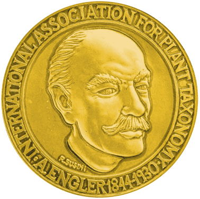 Taxonomic group-specific websites are growing in number, e.g. Umbellifers, Zingiberaceae, Sapotaceae. Try typing in the taxonomic group name into an internet search engine.
Taxonomic group-specific websites are growing in number, e.g. Umbellifers, Zingiberaceae, Sapotaceae. Try typing in the taxonomic group name into an internet search engine.
International Association of Plant Taxonomy.
TAXACOM general systematists listserver (plants & animals)
Global Taxonomy Initiative, GTI.
Taxonomic Databases Working Group.
Herbarium Supply Company, very good for fieldwork collecting equipment.
Online Floras
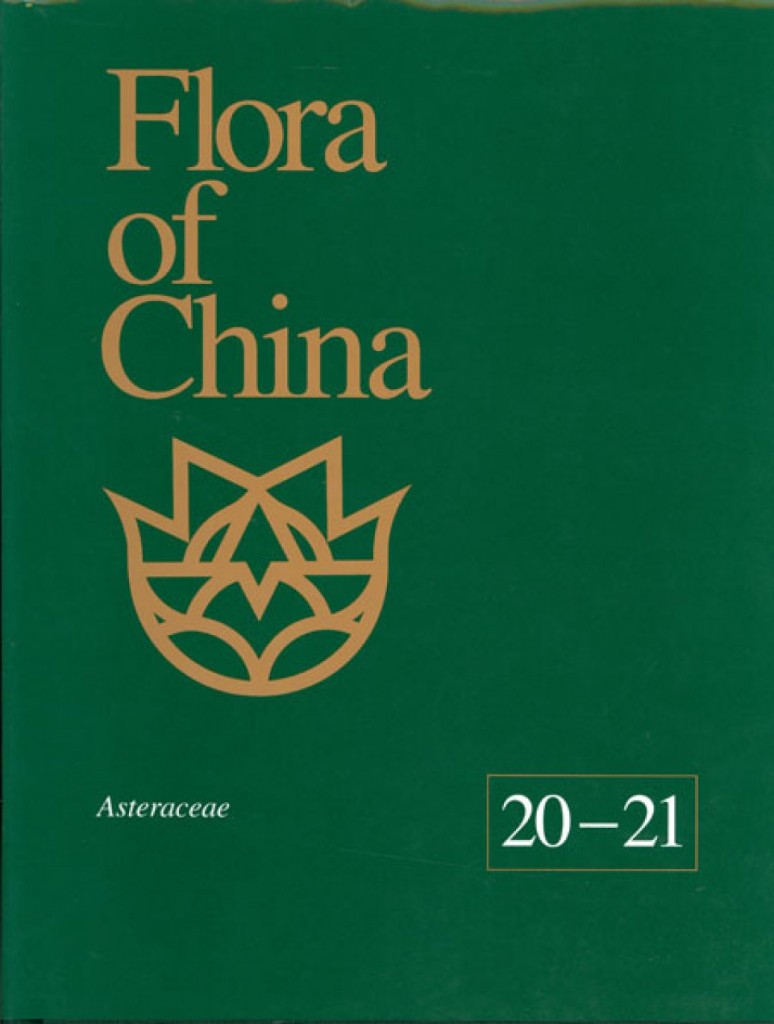 There are an ever-increasing number of online Floras, the following offers a selection of those available:
There are an ever-increasing number of online Floras, the following offers a selection of those available:
Flora of the Canadian Archipelago, includes DELTA descriptions and keys.
Flora of Europe photgraphic guide.
Flora Himalaya Database, from Savoie University.
Flora of Bhutan Umbelliferae, prototype.
Online Keys and Description Coding
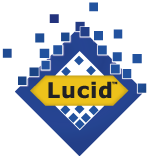 ActKey, major groups in Flora of China, plus several others, e.g. Hansen & Rahn’s classic key to Angiosperms.
ActKey, major groups in Flora of China, plus several others, e.g. Hansen & Rahn’s classic key to Angiosperms.
Hansen & Rahn, an online version of the classic punched card Key to Angiosperms.
eTaxonomy and Cybertaxonomy
 Recent developments have seen the internet used for collaborative taxonomic research. See:
Recent developments have seen the internet used for collaborative taxonomic research. See:
EDIT, European Distributed Institute of Taxonomy.
Scratchpads, biodiversity online
eMonocot, good example of a collaborative eTaxonomic portal

Drew McNaughton
Thanks, Mark, for this really comprehensive list of resources.
Dr. K. Brunda Devi
We are grateful to you for your great contribution for lerners